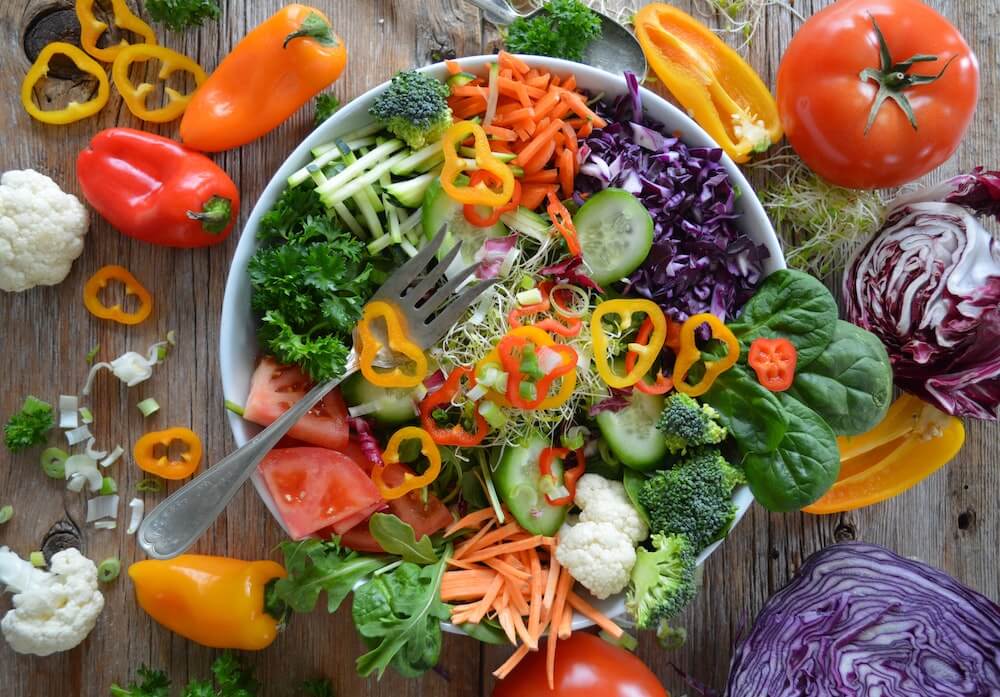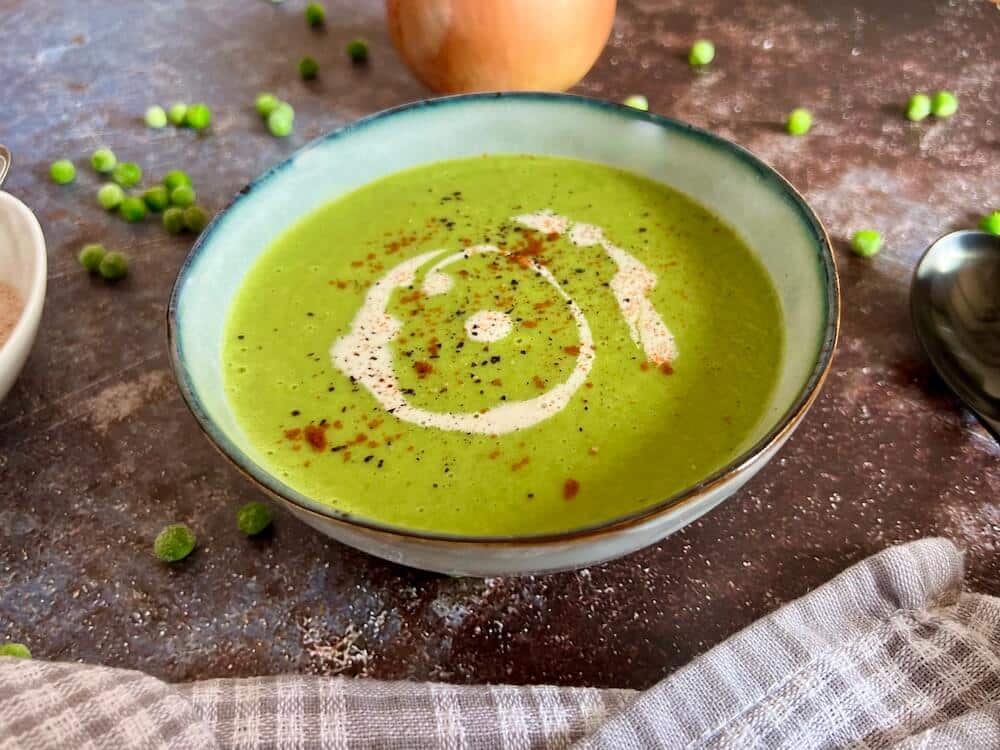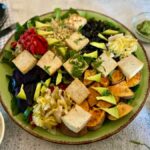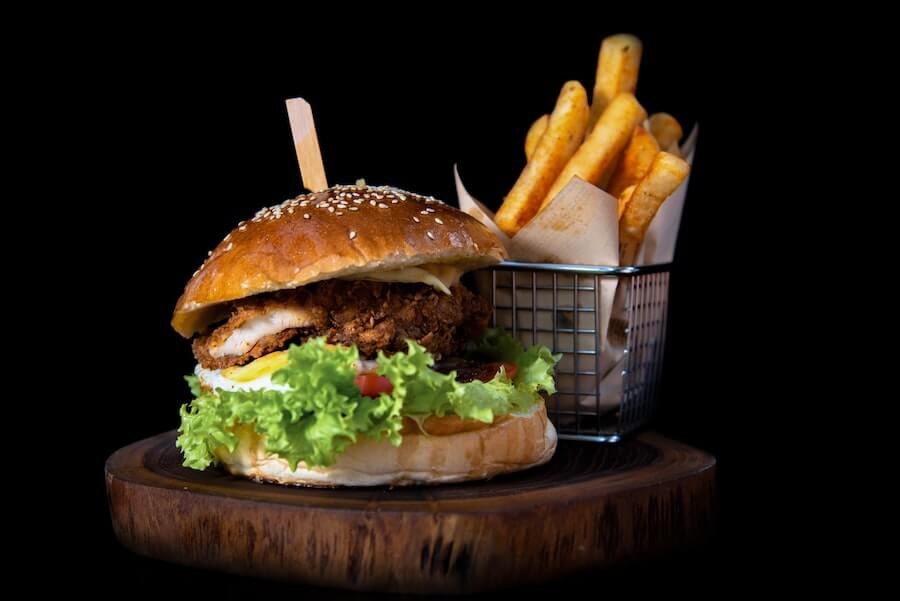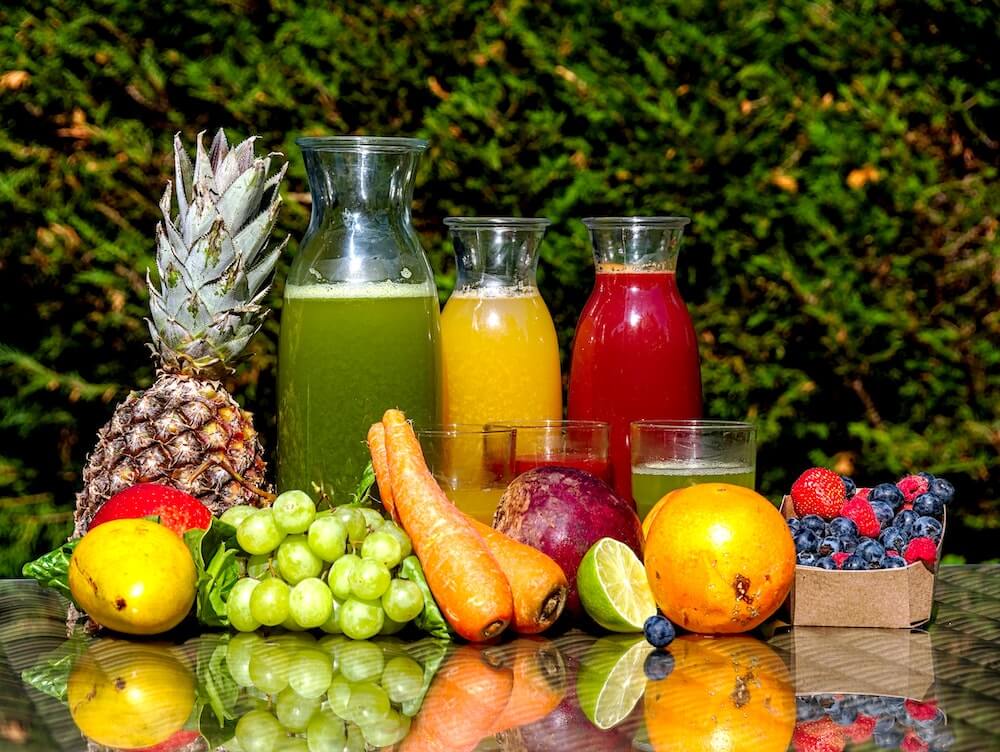What is a WFPB, whole foods plant-based diet and how is it different to a vegan diet? How can you make the change over to a whole foods diet and what benefits does it have?
This guide to a vegan whole foods plant-based diet looks into what it is and how exactly you can apply it to your life.
Table of Contents
What is a Whole Foods Plant-Based Diet?
The whole foods plant based (WFPB) diet focuses on eating only ‘real’ foods and limiting or eliminating processed and refined foods from the diet.
This means basing your food on vegetables including root vegetables, fruits, nuts, legumes, seeds, beans etc.
Refined oil and white flour are eliminated (or restricted). So if you decide to include pasta and bread in your WFPB diet, you would choose the whole grain variety rather than the white version.
The WFPB diet has numerous health benefits and is possibly one of the healthiest ways of living.
Because of its focus on being healthy, it’s more of a lifestyle than a diet and the changes you make have long reaching effects.
A WFPB diet is not necessarily vegan, though many vegans do eat a WFPB diet.
For the purposes of this post, I’m referring to a vegan, gluten free, WFPB diet (but you can always ignore the gluten free part if you want).
Vegan vs Whole Foods Plant-Based Diet
What is a Vegan Diet?
A vegan diet involves eating nothing which comes from an animal or the exploitation of animals. So it doesn’t include meat, fish, cheese, eggs, honey, or any by-product of animal origin.
Depending how thorough a person is with their research, this might eliminate some surprising foods such as refined sugar that’s been filtered through bone char.
The vegan diet excludes foods which contain animal products and by-products in their ingredient list or are made using animal products during the production of the food.
It takes time to become vegan and it’s a journey that you need to take at your own pace. There are many common FAQ when first embracing this way of living.
Being vegan doesn’t necessarily mean eating healthy food. Choosing veganism is about choosing to eat food which doesn’t cause animal cruelty.
Where we recognise that all species share the same right to life.
You can also choose to be vegan to help the planet and the environment, and again, you may not be motivated by the healthy eating.
What are Some Borderline Vegan Foods or Drinks?
Depending on each person, a vegan diet my exclude other things such as wine (or beer) which is not declared vegan, as it may be filtered through animal sourced proteins (milk, egg, gelatine, or isinglass which is fish bladder).
Luckily for vegan wine lovers, there are plenty of vegan wines available these days.
Many vegans may choose to change their relationship with alcohol, because becoming vegan can lead to a sharper awareness of how good it feels to lead a healthy lifestyle.
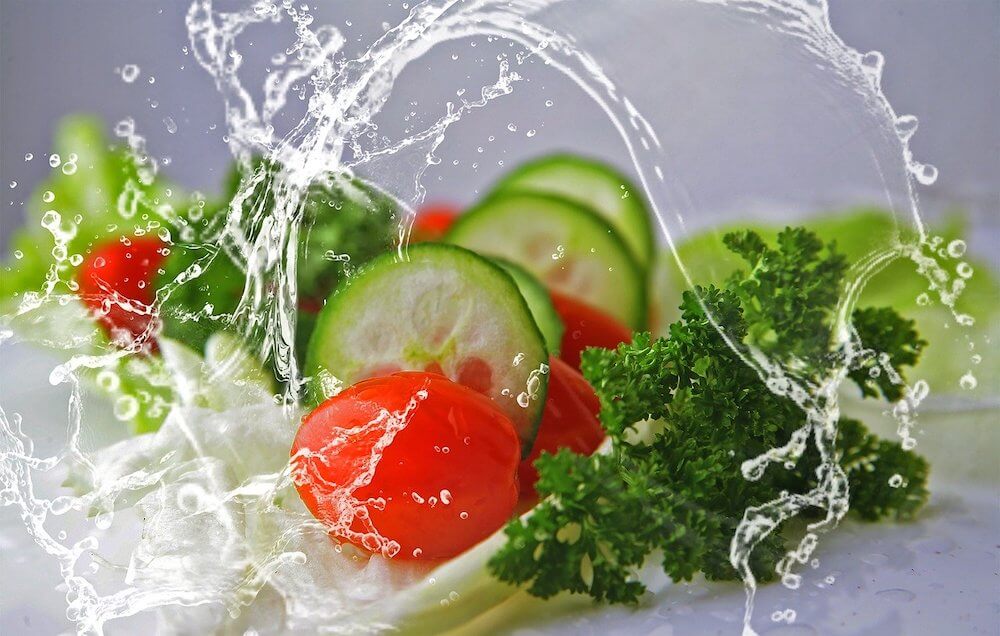
Being vegan teaches you about what we put into our bodies and how to read ingredient lists, discovering such non-vegan ingredients like gelatine, red colouring, and casein to name just a few of the non-vegan ingredients which can lurk in a product.
A vegan diet can range from someone living off predominantly healthy, primary ingredients, to someone who survives on processed vegan fast foods.
Processed foods can be unhealthy even if they’re vegan.
What each vegan person chooses to eat will vary from person to person, as will how strictly they apply their philosophy.
What’s the Difference Between a Vegan Lifestyle vs a Vegan Diet?
Whereas someone who follows a vegan diet is only concerned about what they eat, a vegan lifestyle means a vegan diet (no meat, fish, cheese, eggs, dairy, honey or other animal derived products) and also no other products which come from animal exploitation, so no leather, wool, beeswax etc.
Choosing a vegan lifestyle makes us aware of what ethics we are supporting when we buy certain products, with regard to their ingredients.
It means sourcing vegan shampoo, soap, toothpaste, deodorant, make up and much more.
Vegans will also try to source products which are friendlier to the environment.
We want to support the fellow inhabitants of the planet where we live, as well as stop destroying our planet.
What’s the Difference Between a Whole Food Plant-Based Diet and a Vegan Diet?
A whole food plant-based diet is more focused on becoming healthy and eating only real foods which are ‘whole’ and unrefined.
As mentioned further above, that includes on whole grains, legumes, vegetables, including root vegetables, fruit, nuts and seeds.
The WFPB diet eliminates or reduces the amount of animal products a person eats as a by-product of the healthy diet, rather than as the motivation of the diet.
Refined sugar and white flour are also eliminated from the diet.
A WFPB diet has incredible health benefits and is known to be able to reverse chronic medical conditions such as heart disease and type two diabetes among others.
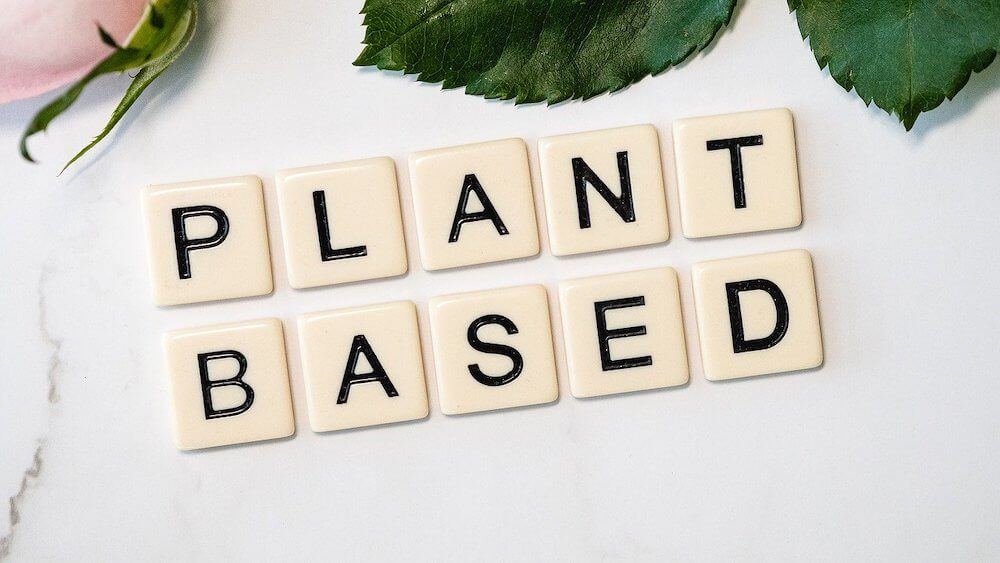
Therefore, if a vegan person eats only real, whole foods rather than vegan processed foods, the main difference between their diet and a WFPB diet will be the elimination of oil from the kitchen.
Many recipes, like a delicious oil-free vegan tomato sauce, are very similar to their oil counterpart, just made without the oil.
Whole Foods Plant-Based Diet for Beginners
If you’re starting out on a whole food plant-based diet, it’s helpful to think about your starting point.
Do you already eat whole foods?
Are you familiar with preparing balanced meals without meat?
As with almost any change, it’s best to take one step at a time. So if you eat largely processed foods, take it slowly to begin with and learn how to cook using whole food ingredients.
Don’t rush in 100% immediately.
On the other side of the spectrum, if you’re a whole food vegan, it won’t take much to learn how to cook without oil.
It’s a bit of a psychological leap, but once you’ve got your head around it, you’ll find the cooking part easy.
Wherever you’re starting from, remember that you don’t have to master it overnight and there are no prizes for making a fast transition.
Just experiment and go at your own pace.
How to Make the Switch to a Whole Food Plant-Based Diet
If you’re looking to try out the wfpb diet, ask yourself a few questions before you begin:
- What are your reasons for going plant based? Are they urgent or leisurely?
- What kind of learner are you and how are you best motivated? For example, by watching videos on Youtube, reading web sites or books, meeting people . . . )
- What’s your current diet like? If you rely on processed foods, you’ll need to go slower and experiment with different ways of cooking.
- Are you experienced with cooking whole foods?
- What personal preferences do you have? Try to imagine yourself living the healthy lifestyle of your dreams, eating a WFPB diet and feeling amazing. That will help motivate you through the transition.
The answers to these questions can help you to decide on the best approach for making changes to your lifestyle and whether you go at it with a fast-track approach or in a more steady manner.
If you’re coming from a vegetarian or vegan space, the change over might not be difficult. And as long as your motivation isn’t due to anything of an emergency nature, you can always choose to make the change gradually, especially if you’re new to this way of cooking.
Start out by doing one day a week, then build it up to twice a week and so on, until you have loads of delicious recipes up your sleeve and you feel confident cooking whole foods without oil.
On the other hand, if you find that you really don’t want to eat the way you used to and you’re ready to jump in, there’s nothing stopping you from switching more quickly to the plant based diet, all in.
If that’s the case, try to find supportive resources, or perhaps join a course which will help you with the shopping and menu planning for the first month or so.
How to Change to a Whole Food Plant-Based Diet
- Decide what your initial goal is (it can always change!). Do you want to try this way of life out for a month, or is the wfpb diet a forever goal, for example.
- Learn a bit about basic nutrition and how to create a balanced plant-based meal before you start. This doesn’t have to be complicated, just general.
- Be forgiving and encourage yourself along the way. Too many people beat themselves up about slip ups. It doesn’t matter if you eat rubbish food one day as long as you keep sight of your desired goal and keep actively taking steps toward it. Every time you eat a wfpb meal is a bonus for your health.
- Join a Facebook group where there are other wfpb people who can support you in your journey.
- Try to think of it as ‘new’ meals rather than replacing your existing meals with copy versions.
- Be positive. Always.
- Take notice at how your taste buds become more receptive to different flavours once you give up sugar! You’ll find that even a tomato tastes sweet!
Whole Foods Plant-Based No Oil Diet (WFPBNO)
Why no oil in the diet? I get you. I had the same reaction when I first came across this way of cooking.
Oil is the most calorie dense food there is.
Not only that, they are ’empty’ calories, meaning that they aren’t giving you any additional nutrition to speak of. The fibre’s been removed until the only thing left is the oil.
So while extra virgin olive oil is largely thought of as being healthy, from a perspective of the whole food plant based diet, it’s considered over-refined.
When you eat a whole olive with the olive oil inside it’s fine because it’s a whole food.
Apart from the high calorie count, oil can make food unhealthy, especially when cooked. It’s no secret that fried foods are not good for us, or that deep fried foods are bad for the heart.
So it doesn’t come as a huge surprise that oil is not included in this health-boosting diet.
Personally, since embracing oil-free cooking on a more full time basis at the end of 2021, I actually love my food more and more (if that’s even possible).
But Don’t We Need Fat in Our Diet?
We all need to eat a certain amount of fat in our diet but we can get enough fat from the whole foods we eat.
Nuts, olives and avocados are all high in healthy, natural fats, and you only need a small amount of fat in your diet for optimum health.
Of course there are as many different opinions on this as there are stars in the sky, but the approach of the wfpb diet makes sense to me.
I must confess, I absolutely love a good strong spicy extra virgin olive oil but even so, I’m preferring the way I’m eating now and I don’t miss it.
If I have it again in the future, it will only be on rare occasions and it will be raw.
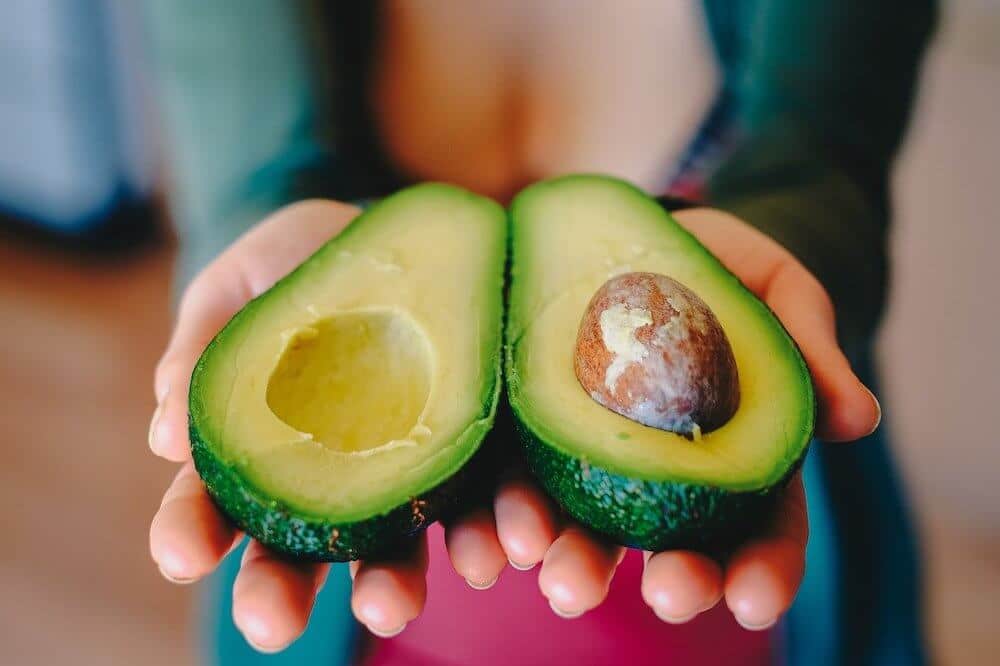
How to ‘Fry’ foods Without Oil
When cooking without oil, you can still use the same process as you would when you start of with a ‘fried’ base such as onion and garlic. The only difference is that there’s no oil in the pan.
Use a non-stick pan like a large non-stick wok for example. Heat the pan first, then add the chopped onions, garlic, ginger or whatever and stir. Dry-fry the veggies, stirring as necessary and adding a tablespoon of water if they begin to stick to the bottom of the pan.
If a layer forms on the bottom of the pan, scrape it off with a wooden spoon to be included in the food. This is called ‘de-glazing’.
The method of dry-frying may take a little while to get the hang of, but once you get into it, I find it just as good as normal frying. I actually prefer it now when it’s oil-free.
The resulting dish is equally tasty as its oil counterpart but without the additional calories.
How to Roast Vegetables Without Oil
Roasting vegetables without oil is one of my favourite meals at the moment.
There’s a simple trick to getting that caramelised yummy roasted taste. First of all, cut the veggies according to what you’re trying to get. If its red cabbage for snacking on, you’ll want to keep the pieces big.
But if you’re making a medley of veggies for stuffing in a pitta pocket for example, then you can cut them into smaller cubes and chunks.
Heat the oven to 200ºc and add teh tray of vegetables. Roast according the time needed but let’s say for example for 30 minutes. Then, turn off the oven and leave the roasting tray in the oven for a further 15-20 minutes to slow cook without the heat on.
This gives the vegetables an amazing extra flavour of sweetness.
Roasting with Lemon Juice and Lemon Rind
You can also use the juice from half a lemon squeezed over the veggies and the rind from the whole lemon (when cooking a large tray full).
I especially love this method when I’m cooking a veggie mix with chickpeas in the oven.
Don’t forget the sprinkle of salt, which is also essential for this way of cooking (in my opinion).
Where Do I Get My Protein on a Whole Foods Plant Based Diet?
Protein is the hot potato topic for both a vegan diet or a whole food plant based diet alike. There are almost as many opinions as stars in the sky!
People continually worry about where they will get their protein and how they will get enough of it.
There are two sides of the camp. Basically on the wfpb diet, you get enough protein by eating a balanced diet to include the following protein sources;
- chickpeas
- lentils
- beans
- nuts
- seeds
- quinoa
- rice
- tofu
On the other side of the camp are the people who believe they need even higher levels of protein in order to produce enough muscle for working out and also to promote weight loss. In this case, there is always the option of buying a raw vegan protein shake made from whole ingredients.
Don’t forget, we’re all different and what works well for one person might not be exactly the same for you. The overall plan of eating whole foods is undeniably healthy, but the choice of whether or not to take an additional protein shake will end up being a personal choice.
Health Benefits of the Whole Foods Plant-Based Diet
The health benefits of the WFPB diet are so far reaching, they warrant a post just on them, but just briefly, here are some of the main health benefits of eating a whole food plant based diet.
#1 A Healthy Heart on a Whole Foods Plant-Based Diet
A WFPB diet is most known for being heart-friendly and nothing demonstrates the power of this more than the team and the movie over at H.O.P.E – what you eat matters.
Chronic heart disease is a food-induced condition which can be avoided, improved or reversed by eating a whole foods plant based diet.
The evidence is overwhelming for the powerful health benefits a WFPB diet has on heart health.
Watch the video below for a fascinating and powerful story of transformation.
# 2 No Bad Cholesterol in Whole Foods Plant-Based Diet
As long as your vegan diet isn’t based around processed foods (which can also be unhealthy), then your cholesterol levels will almost certainly drop after switching from a meat based diet. Meat is high in saturated fats while plants are free from saturated fats.
A vegan whole food diet is associated with lower levels of LDL cholesterol than an omnivore diet.
# 3 Lower Blood Pressure on a Whole Foods Plant-Based Diet
A whole food vegan diet has long been associated with lowering high blood pressure and can be used as a treatment or prevention plan.
Transition to a WFPB diet to lower your blood pressure or to avoid getting hypertension.
# 4 Manage, Prevent or Reverse Type 2 Diabetes with a Whole Foods Plant-Based Diet
Eating a whole food-plant based diet may help to manage, prevent or reverse type 2 diabetes, lowering blood sugar levels as well as halting blood sugar spikes.
# 5 Anti-Inflammatory Effect of the Whole Foods Plant-Based Diet
Eating a whole food plant-based diet means less inflammatory foods and reduced inflammation within the body.
This means that eating a wfpb diet can be key in managing conditions such as rheumatoid arthritis as well as other chronic disease.
# 6 Weight Management on a Whole Foods Plant-Based Diet
Eating a wfpbd can lead to weight loss and will usually naturally bring your weight to its optimum place as it’s low in refined sugar and fats, high in fibre and antioxidants.
This means that for people wanting to reduce their weight, they may find it a better approach than having to count calorie intake for example, which can lead to short-lived results rather than long term change.
# 7 Longevity
Although nobody can predict or make any fixed claims when it comes to longevity, eating a wide variety of fruits and vegetables is associated with living longer and also with the person being more healthy in older age.
Whole Foods Plant-Based Diet Pros and Cons
The pros and cons of a whole foods plant based diet also depend on your current diet. In my opinion the pros far outweigh the cons.
Pros of following a whole foods plant-based diet
- Promotes heart health
- Help to regulate blood pressure
- Manage or prevent type 2 diabetes
- Naturally full of healthy antioxidants to boost immune system
- May improve longevity
- Naturally high in fibre and low in refined foods
- Sugar-free (except naturally occurring sugars)
- Easy to make gluten free
- Cuts down on your shopping list
- Can save money on shopping (depending what you were eating before)
- Your taste buds come alive and food tastes so much sweeter
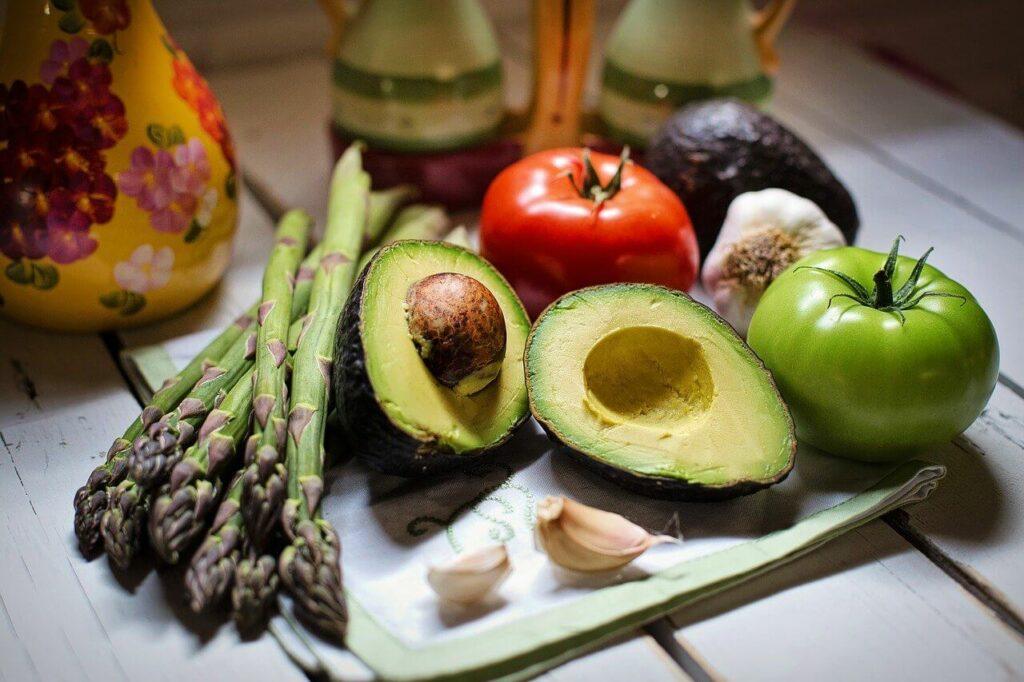
Cons of following a whole foods plant-based diet
- Time and energy investment to learn to balance your wfpb meal
- Eating out in restaurants as a vegan or on a whole food plant based diet can become boring unless you’re lucky enough to live in a vegan-friendly country/area
- People might not understand your choice to go whole food plant based.
Do I Need Supplements if I’m Giving Up Meat and Changing to a Whole Foods Plant-Based Diet?
I would advise speaking to a nutritional advisor who is specialised in whole foods plant based and vegan. In my experience it isn’t helpful to visit a dietician or nutritionalist who eats a traditional meat diet and has little or no experience with the vegan diet.
Find someone who can support your journey and advise you on which supplements you should be taking.
I’m not trained or qualified to advise on supplementation but this is from my own personal experience. I always make sure that the supplements I buy are vegan:
- Everybody should supplement with vitamin B12 because it is sourced from the soil and the soil is depleted in these modern times.
- Omega 3 is important for vegans/wfpb as it is commonly sourced from fish so be sure to buy vegan capsules. Flax is another source of Omega 3.
- Vitamin D3, especially in winter months or for people who get little exposure to sunlight.
- A top quality multi vitamin may be recommended.
- Magnesium – I’ve read that most people are deficient in magnesium.
- Iron – only if your iron levels are low.
Starting Out on a Whole Foods Plant-Based Diet
WFPB Homemade Flatbreads
Oil free flatbreads are easy to make and go well at any time of day alongside almost anything you eat. You can make oil free flatbreads from gram flour (chickpea flour) or from red lentils.
Red lentil flatbreads are slightly more flavoursome and have a higher protein content than the chickpea flour flatbread variety, but the main difference is in the preparation.
For the lentil flatbreads you will need a high speed food processor that can grind lentils into flour, or you will need some extra time to soak the lentils.
So take your pick between gram flour or lentil flatbreads, or just use them both!
Make WFPB Side Sauces & Dips
When switching to a WFPB diet, one of the first things you can do is master how to make a delicious oil free cashew sauce (soo simple).
You can then adapt it into a delicious cilantro sauce or basil sauce, because these will be really helpful for adding flavour to everything you eat.
Find a sauce you love to add to your plate, then you can love every meal you eat!
Next, make an oil free hummus or an easy avocado dip for eating with crudités and serving with your salad. You can also use tahini sauce as your salad dressing.
Make a scrumptious oil free tomato sauce and you’ll immediately have access to meal variations like pasta, rice or quinoa with tomato sauce.
Snacks & Main Courses to Make When First Switching to a WFPB diet
If you don’t already have an air-fryer, I recommend you get one because it changes what and how you can cook. Plus it makes cooking time much quicker and gives less hassle than traditional cooking.
I’m blown away by the versatility of oil free cooking with an air-fryer, something which opens up so many opportunities.
After that, try making a one pan wfpb vegan meal or an oil free vegan cauliflower cheese and one of my all time favourites is a chick pea snack.
Another handy one is the Spanish pisto, only made without oil.
Talking of oil, you’ll want to switch out your normal bread for a wfpb version, or make this simple gram flour flatbread instead.
Once you’ve got that far you can start experimenting with the more complicated things like oil free zucchini lasagne and cottage pie for example.
It’s not that these are complicated, because they’re not, but for first starting out, it’s better to build on steps.
Oil Free WFPB Soups
There’s no end to how many soups you can create once you get your head around basing them on veggies that are fried in water instead of in oil.
Some of my favourites are tomato vegetable soup, onion soup, pumpkin soup, broccoli soup and zucchini soup.
WFPB Salads
You can make any salad into a wfpb salad.
In fact, it’s my belief that after a few weeks of eating only a wfpb diet, your taste buds will change so much that your salads will taste sweeter.
You won’t want the oil on them anymore – and it’s for that reason that I haven’t placed salads at the top of the list of things to start out with.
When first starting out, a salad without oil may seem more difficult to enjoy psychologically than a recipe which is cooked without oil and the end result doesn’t actually ‘show’ that there’s no oil in it.
Some example salads are a standard mixed salad, quinoa salad, Spanish pepper salad, pasta salad, tofu & broccoli salad and rice salad or switch out the rice in rice salad for cauliflower rice instead.
WFPB Salad Dressings
- Homemade cashew sauce for a creamy salad dressing.
- Cilantro sauce
- Oil free vegan pesto
- Tahini drizzled on top (yummm)
- Dilute some tahini with water, salt, tamari and balsamic vinegar
- Squeeze over some fresh orange juice or lemon juice
- Pour on some balsamic vinegar
WFPB Meal Plan Example
There are so many whole food plant based recipes because you can basically take any veggies, choose a protein source to go with it and create a new meal in a flash.
But we can also make more ‘formal’ recipes that have a name such as lasagne, cottage pie, bami, nasi, stir fry, curry, all of which can be adapted to be oil free.
- Breakfast: overnight oats, or chia seed pudding, avocado on homemade whole grain bread, or a fruit salad
- Lunch: vegetables & tofu in the air fryer served with coriander sauce
- Dinner: no pasta zucchini lasagne
For more recipes, if you click on the oil free category you’ll find our wfpb library of recipes.
